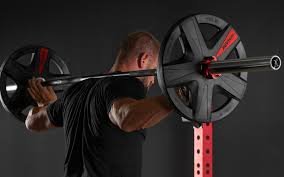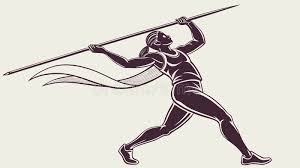
olympic barbell
Few pieces of equipment are as essential to weightlifting as the Olympic Barbell. Found in gyms, fitness centers, and home setups worldwide, it is the standard for powerlifting, Olympic lifting, and general strength training. With its precise specifications, durable design, and universal acceptance, the Olympic Barbell has become the gold standard of strength equipment. For beginners and professionals alike, it represents not only a tool for building muscle but also a symbol of discipline and performance.
What Is an Olympic Barbell?
An Olympic Barbell is a type of weightlifting bar specifically designed to meet international standards for competitive lifting. Unlike standard bars, Olympic barbells are built with specific measurements and features to ensure consistency in training and competition. They are recognized globally as the official equipment for Olympic weightlifting events.
The most important distinguishing features include a length of 2.2 meters (7.2 feet) for men’s bars and 2.01 meters (6.6 feet) for women’s bars. They are engineered to hold heavy loads, with weight capacities exceeding 1,000 pounds in most high-quality models.
Specifications and Design
The design of an Olympic Barbell is not random—it is carefully engineered to maximize performance, safety, and durability.
- Shaft Diameter: 28 mm for men’s bars, 25 mm for women’s bars.
- Sleeve Diameter: 50 mm, allowing Olympic-sized weight plates to fit securely.
- Weight: 20 kg (44 lbs) for men’s bars, 15 kg (33 lbs) for women’s bars.
- Knurling: The textured grip etched into the shaft provides traction for lifters. Olympic bars often feature center knurling for squats and dual markings for both Olympic and powerlifting grips.
- Sleeve Rotation: High-quality bars use needle bearings or bushings to allow the sleeves to spin smoothly, reducing strain on the wrists and elbows during explosive lifts.
This combination of features makes the Olympic Barbell both versatile and specialized, ensuring it can withstand the demands of elite training.
The Importance of Sleeve Rotation
One of the most critical aspects of an Olympic Barbell is the rotating sleeve mechanism. During dynamic lifts such as the clean and jerk or snatch, plates rotate rapidly, and fixed sleeves could cause dangerous torque on the lifter’s joints. Bearings or bushings inside the sleeves reduce friction, allowing smooth rotation. High-end barbells often use needle bearings, which provide faster and more consistent spin compared to bushings, making them ideal for competitive lifting.
Olympic vs. Standard Barbells
A common question among beginners is how the Olympic Barbell differs from a standard barbell. The key differences include:
- Load Capacity: Olympic bars handle heavier weights, making them suitable for advanced lifters.
- Sleeve Diameter: Olympic bars have thicker sleeves (50 mm) compared to standard bars (25–28 mm), requiring different plates.
- Length and Weight: Olympic bars follow strict measurements, while standard bars vary in size and weight.
- Durability: Olympic bars are built with stronger steel to resist bending under heavy loads.
For those serious about lifting, investing in an Olympic Barbell provides long-term value and performance that standard bars cannot match.
Olympic Lifting Movements
The Olympic Barbell is specifically designed for two competitive lifts:
- The Snatch: A single, explosive movement where the bar is lifted overhead in one motion.
- The Clean and Jerk: A two-part lift where the bar is first brought to the shoulders (clean) and then driven overhead (jerk).
Both lifts require precision, speed, and technique. The bar’s flexibility, knurling, and sleeve rotation all contribute to safer and more efficient execution of these demanding movements.
Role in Powerlifting and Strength Training
While named for its role in Olympic lifting, the Olympic Barbell is also indispensable in powerlifting and general strength training. Exercises such as squats, deadlifts, and bench presses all rely on the stability and durability of Olympic bars. Their ability to handle heavy loads makes them the go-to choice for serious lifters aiming to increase maximum strength. Even in fitness programs like CrossFit, the Olympic Barbell plays a central role due to its versatility across different training styles.
Materials and Durability
High-quality Olympic Barbells are crafted from hardened steel alloys designed to resist bending and warping. Manufacturers measure durability using tensile strength, with premium bars rated at 190,000–220,000 PSI or higher. Bars are often coated in chrome, black oxide, or zinc to prevent rust and wear. Proper care, such as cleaning chalk residue and storing the bar in a dry place, ensures longevity even under heavy use.
Training Benefits of the Olympic Barbell
Using an Olympic Barbell provides several advantages:
- Progressive Overload: The ability to add plates in small increments allows steady strength gains.
- Full-Body Engagement: Compound lifts with a barbell engage multiple muscle groups at once.
- Balance and Coordination: Unlike machines, barbells require stabilization, improving athletic performance.
- Scalability: Suitable for beginners with lighter weights and professionals with maximum loads.
This versatility explains why Olympic Barbells remain the cornerstone of strength training programs worldwide.
Choosing the Right Olympic Barbell
For those looking to purchase an Olympic Barbell, several factors should be considered:
- Purpose: Weightlifting-specific bars are more flexible with superior spin, while powerlifting bars are stiffer.
- Knurling Preference: Aggressive knurling provides stronger grip but may be uncomfortable for high-rep training.
- Budget: Entry-level bars may cost under $200, while competition-grade models exceed $800.
- Brand Reputation: Trusted manufacturers ensure durability, safety, and compliance with standards.
For buyers, the Rogue Fitness Olympic Barbell collection offers a wide range of options trusted by professionals.
Olympic Barbells in Competition
In international competitions like the Olympic Games, only certified bars from approved manufacturers are used. These barbells undergo rigorous testing to meet the standards of the International Weightlifting Federation (IWF). Specifications ensure uniformity, so athletes from different countries compete on equal terms. The precision engineering of these bars also helps prevent injury during high-stakes lifts.
Maintenance and Care
To extend the lifespan of an Olympic Barbell, lifters should follow proper maintenance routines:
- Clean chalk and sweat from the shaft after each session.
- Store the bar horizontally on racks or vertically in barbell holders.
- Avoid dropping the bar without bumper plates, which can damage both the bar and the floor.
- Periodically oil the bushings or bearings for smoother sleeve rotation.
Proper care ensures consistent performance and reduces the need for costly replacements.
The Cultural Symbolism of the Olympic Barbell
Beyond functionality, the Olympic Barbell has become a symbol of strength culture. It represents dedication, resilience, and the pursuit of physical excellence. In gyms across the world, loading plates onto an Olympic Barbell signals serious intent—a ritual connecting athletes, weightlifters, and fitness enthusiasts across generations.
Conclusion
The Olympic Barbell is more than just a piece of steel—it is the foundation of strength training and a symbol of athletic discipline. From its standardized specifications to its critical role in Olympic competitions, it has earned its reputation as the most important tool in weightlifting. Whether used by elite athletes or beginners starting their fitness journey, the Olympic Barbell provides unmatched durability, versatility, and performance. For those building a serious gym setup, investing in a quality barbell ensures both safety and long-term results.
For more information on official standards, the International Weightlifting Federation provides detailed specifications and approved equipment lists.






